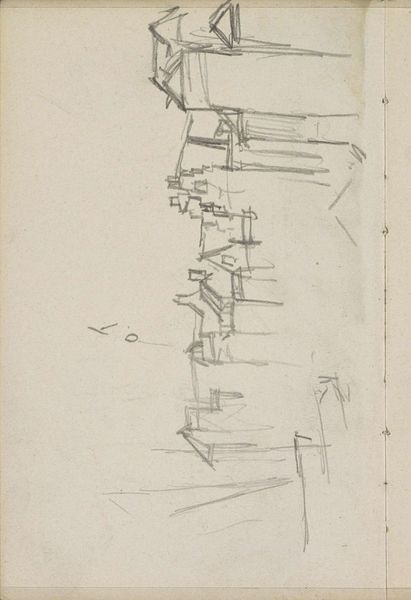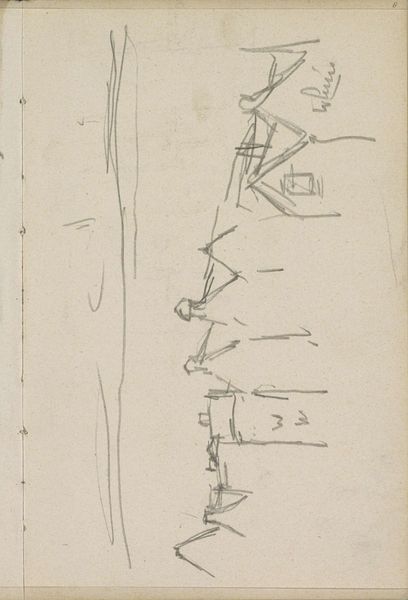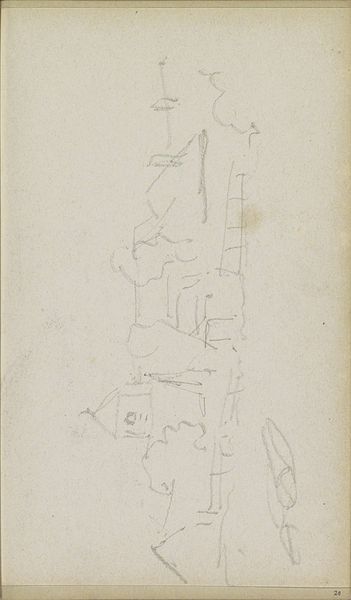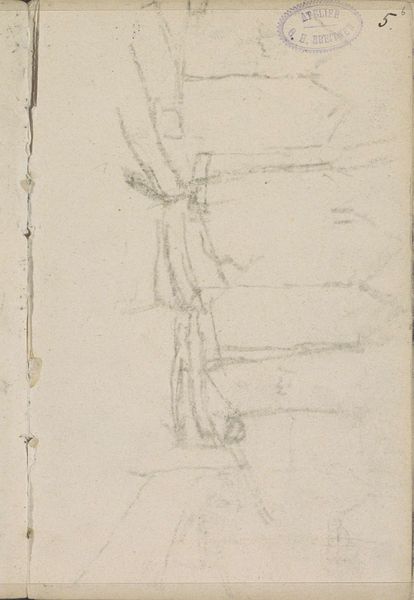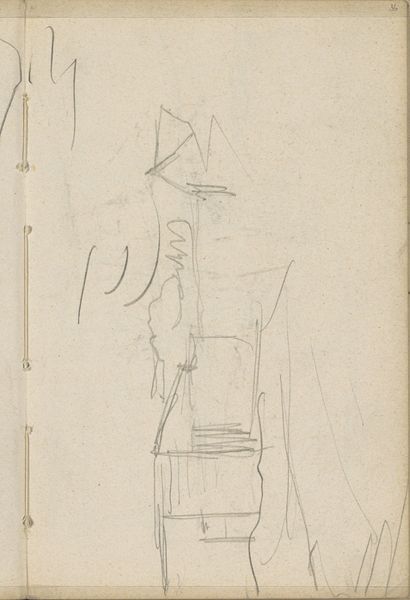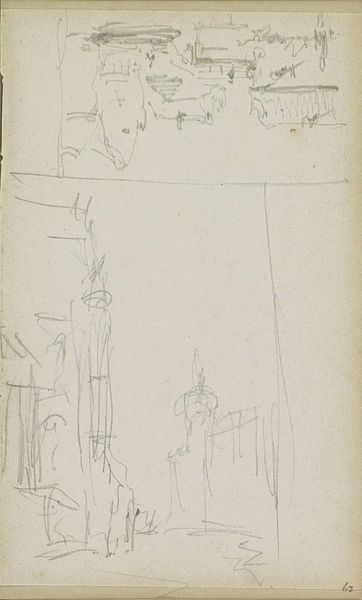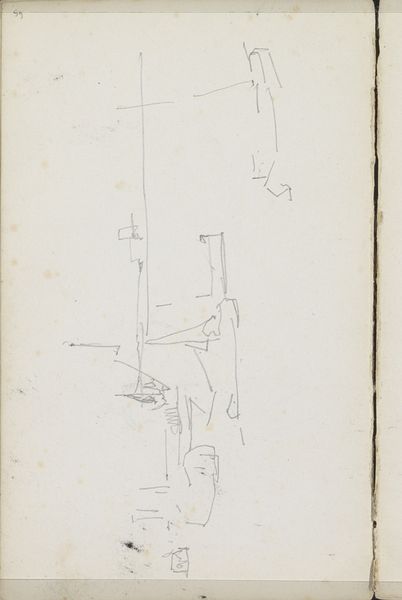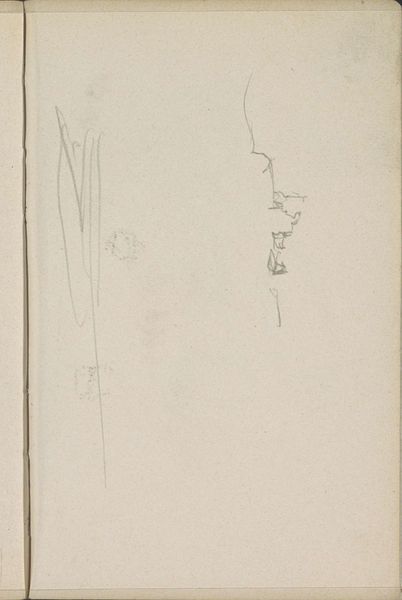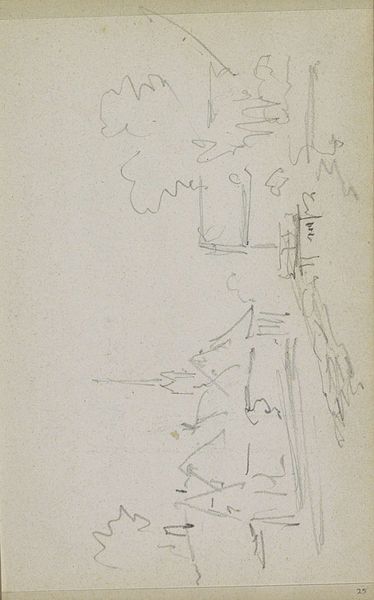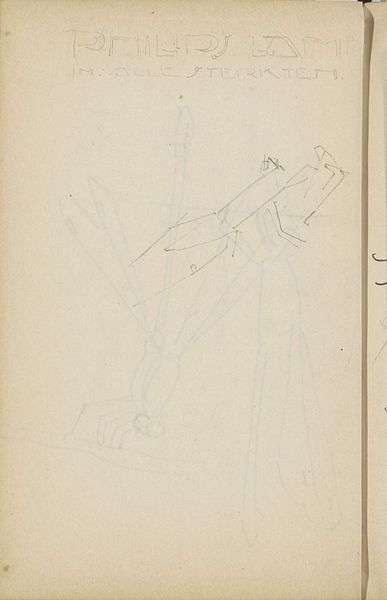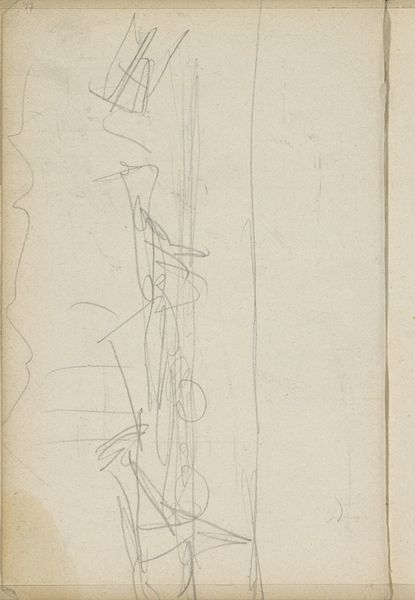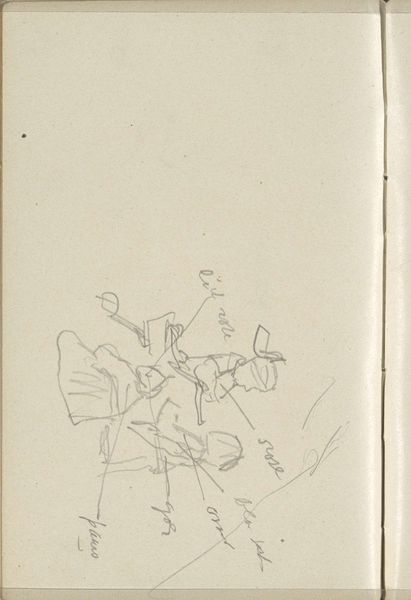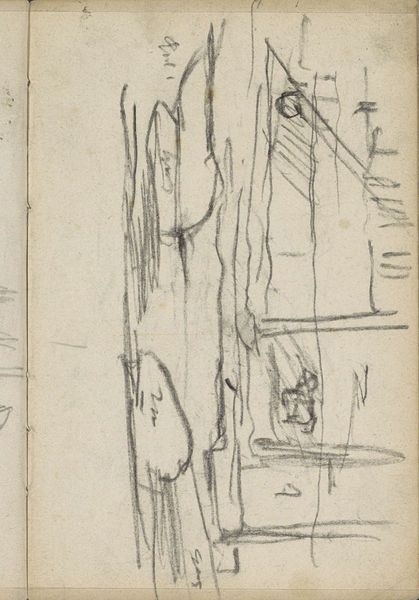
Copyright: Rijks Museum: Open Domain
Curator: Here we have George Hendrik Breitner's "Gezicht te Amsterdam, mogelijk het Damrak," or "View of Amsterdam, possibly the Damrak," dating from around 1909. It’s a pencil drawing on paper currently residing in the Rijksmuseum collection. Editor: The immediate feel of this sketch is transience. Those faint lines barely clinging to the page give the impression of a city always moving, always changing, about to vanish into the mist like a dream. Curator: Indeed. Breitner, though associated with Impressionism, brought a unique grittiness to his cityscapes. He was very interested in depicting the working classes and everyday life, often using photography as a tool. Think about the process: sketching outdoors in a bustling city, trying to capture fleeting moments. Editor: That’s what strikes me – the urgency! It feels almost incomplete, like the artist captured the bones of the scene, a scaffold awaiting flesh. But it's powerful. It feels like an honest snapshot, more so than any posed, polished portrait. There’s beauty in the unvarnished view. Curator: His method would involve using photography to gather references which is interesting for thinking about artistic labor as fundamentally integrated with technological innovation. This method allowed him a type of capturing what felt "real" at the turn of the century as it grew increasingly fast-paced. Editor: The limitations of his time, compared to ours, is still present when I'm looking at the finished product. The lack of heavy details lends itself to a ghostly portrayal. I wonder if the relative softness contributes a sense of melancholic charm? The Damrak now is always bustling and full of vibrant commotion! It can make one question the implications of technological saturation in the now, and reflect upon these earlier methods and the associated stylistic impact on an audiences ability to "relate" to the portrayed scenes. Curator: His drawings allowed a close interaction with materials and mark-making that is divorced from purely technological interventions which in themselves provide for distinct affects when presented. Editor: Thinking about the past through art, through sketches like these, helps me slow down my mind. It lets me appreciate the labor and materials present when attempting to document time itself. Curator: Precisely, viewing how those lines give such substance and nuance. Editor: It really shows you that seeing, in and of itself, takes patience, no matter how rudimentary the tool or sketch.
Comments
No comments
Be the first to comment and join the conversation on the ultimate creative platform.
